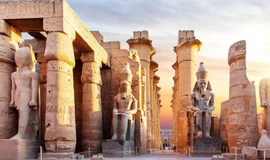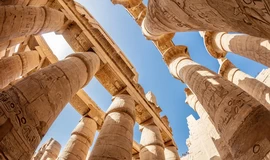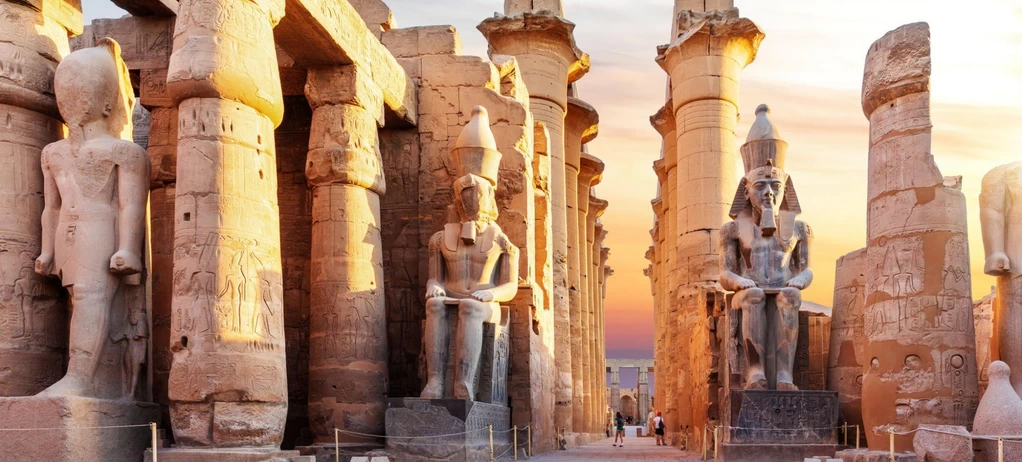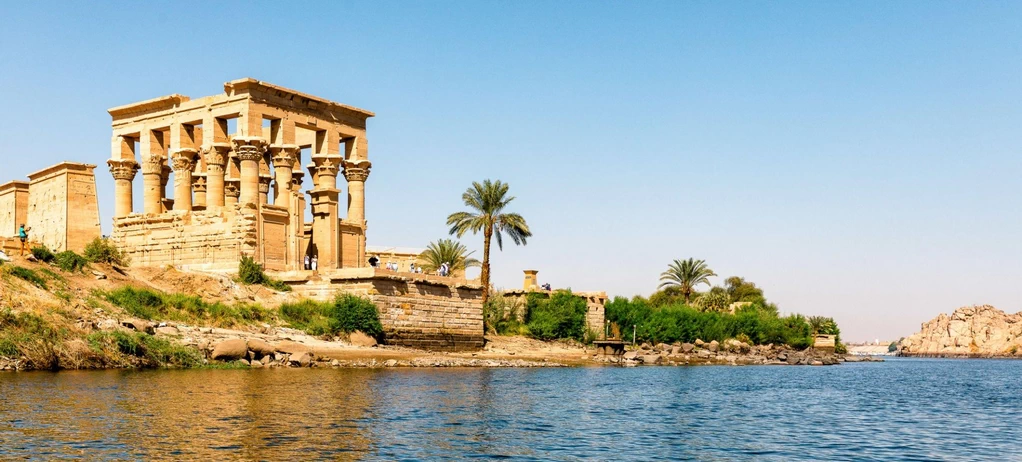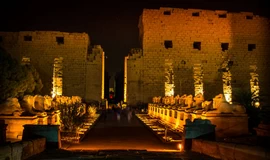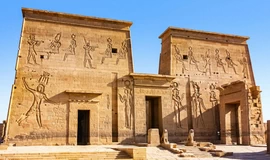The Great Egyptian Temples A Fusion of History and Mythology
Egypt, with its awe-inspiring monuments and mystical landscapes, stands as a testament to a civilization that thrived for millennia. Among the many wonders that dot the Egyptian landscape, the temples hold a special place, seamlessly blending history and mythology. These architectural marvels not only serve as sacred spaces but also act as gateways to understanding the beliefs, culture, and daily life of ancient Egyptians.
Temples as Time Capsules:
Each temple is a living archive, encapsulating the stories of an era long gone. From the grandeur of the Great Temple of Karnak to the serene beauty of Philae Temple, these structures narrate tales of pharaohs, gods, and the intricate rituals that shaped the Egyptian way of life.
1. Great Temple of Karnak
Nestled in the ancient city of Thebes, the Great
Temple of Karnak is a colossal complex that served as a religious center for over 2,000 years. Key attractions within Karnak include the Hypostyle Hall, where towering columns adorned with hieroglyphics create an awe-inspiring ambiance. The Avenue of Sphinxes and the Sacred Lake are must-visit areas, showcasing the scale and grandiosity of this temple.
2. Luxor Temple
Just a stone's throw away from Karnak, Luxor Temple stands as a symbol of religious and political power. Dedicated to the Theban Triad, Luxor Temple is particularly enchanting when illuminated at night. The colossal statues of Ramses II, the Avenue of Sphinxes, and the Mosque of Abu Haggag add layers of history to this iconic site.
3. Philae Temple
Poetically located on an island in the Nile,
Philae Temple is dedicated to the goddess Isis. Rescued from the rising waters of the Aswan Dam, Philae Temple is a masterpiece of engineering and dedication. The Sound and Light Show at Philae Temple provides a mesmerizing experience, narrating the temple's history against the backdrop of the Nile.
Mythology Woven in Stone
Egyptian temples are not mere structures; they are portals to a world where mythology and reality intertwine. The intricate carvings and hieroglyphs adorning the temple walls tell stories of gods, goddesses, and the pharaohs who believed they were divine.
1.
Mythology: The Egyptian pantheon, with gods like Ra, Osiris, and Isis, is brought to life through temple art. Each temple is a homage to these deities, portraying their myths, battles, and divine attributes. The alignment of temples with celestial events, such as the sun's journey across the sky, further emphasizes the profound connection between mythology and architecture.
2.
Gods : The statues of gods within temples serve not only as religious symbols but also as protectors of the sacred space. Colossal depictions of deities like Horus and Anubis stand guard, underscoring the belief in divine intervention and protection. Visitors are transported to a realm where gods walked among mortals, and temples were bridges between the earthly and divine.
3.
Hieroglyphs: The very language of the ancient Egyptians, hieroglyphs, covers temple walls in a tapestry of stories. From creation myths to the pharaoh's divine lineage, these intricate symbols offer a glimpse into the beliefs and rituals of a civilization obsessed with the afterlife. Deciphering these hieroglyphs is like unlocking a cryptic code that reveals the secrets of the past.
4.
Carvings :The meticulous carvings on temple walls depict scenes of daily life, religious ceremonies, and the triumphs of pharaohs. The attention to detail is staggering, showcasing not only artistic prowess but also a commitment to preserving the cultural and historical identity of ancient Egypt.
Cultural Significance
Beyond their mythological and historical significance, Egyptian temples are cultural touchstones that reflect the societal norms, beliefs, and advancements of their time. They were not only places of worship but also hubs of economic, political, and educational activities.
1.
Cultural Identity :Temples were focal points of cultural expression, where art, music, and dance intertwined with religious ceremonies. Festivals held at temples, such as the Opet Festival, were not only religious events but also celebrations of community and identity.
2.
Rituals: The rituals conducted within temple precincts were elaborate affairs, involving priests, pharaohs, and the general populace. These rituals were believed to maintain cosmic order and ensure the prosperity of the land. Temples served as conduits for communication with the divine, and their proper functioning was seen as vital for the well-being of the entire kingdom.
3.
Education:Temples were not only centers of religious worship but also institutions of learning. Priests, who played a crucial role in temple activities, were scholars and keepers of knowledge. Temples housed libraries and schools where scribes and priests were trained, contributing to the preservation and dissemination of wisdom across generations.
Architectural Marvels:
The temples' architectural brilliance is a testament to the advanced engineering and artistic prowess of ancient Egyptians. From the precision of the alignments to the symbolism embedded in every column and statue, these structures stand as enduring marvels of human ingenuity.
1.
Architecture :The layout of Egyptian temples is a carefully planned reflection of cosmic order and divine harmony. The axis of the temple is often aligned with celestial bodies, emphasizing the connection between the earthly and celestial realms. The use of massive columns, towering pylons, and intricate courtyards creates a sense of awe and reverence.
2.
Engineering : The construction of temples involved sophisticated engineering techniques that still puzzle modern architects. The precision in the placement of massive stones, the use of ramps, and the mastery of structural stability are evident in temples like the Great Pyramid of Giza and the Temple of Hatshepsut.
3.
Symbolism:Every aspect of temple architecture is laden with symbolism, from the placement of statues to the choice of materials. The obelisks, pylons, and hieroglyphic inscriptions all convey deeper meanings, serving as a visual language that communicates the religious, political, and cultural ideologies of ancient Egypt.
Preserving the Legacy
While these temples have weathered the sands of time, they face modern challenges such as tourism impact, environmental changes, and preservation efforts. Striking a balance between accessibility and conservation is crucial to ensure that these wonders continue to inspire generations to come.
1.
Conservation: Preservation efforts involve a delicate balance between protecting the structural integrity of temples and allowing public access. Initiatives such as controlled tourism, restoration projects, and climate control measures are essential to safeguard these treasures.
2.
Preservation : Modern technology, including 3D scanning and virtual reconstructions, plays a vital role in documenting and preserving temples. These techniques allow researchers to create digital replicas, providing invaluable resources for studying and understanding these ancient structures without causing physical harm.
3.
Tourism :The influx of tourists, while essential for economic reasons, poses a threat to the preservation of temples. Sustainable tourism practices, guided tours, and educational programs can help strike a balance between allowing public access and protecting these delicate archaeological sites.
